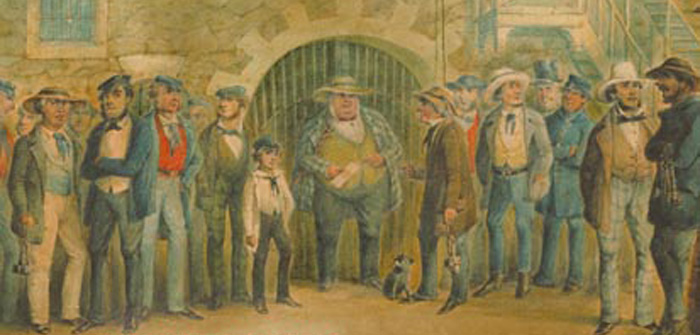The story of the Adelaide Gaol, told through the journal of its first Governor, is Rhondda Harris’ first book. She is a retired archaeologist and came across William Baker Ashton’s journal in the State Archives quite by accident. The journal had been indexed as dating from 1939-1945 rather than 1839-1845 and had thus been more or less untouched for a century and a half.
The colony of South Australia was very proud of the fact it was established by free settlers and not as a convict settlement and there had been no plans for a gaol in the colony. However, it was soon clear that the colony needed somewhere to house deserting sailors, criminals and drunkards. Of great concern to the establishment was the number of convicts coming from other colonies as they were seen as ‘tainting’ the free colony.
The gaol also housed the insane and the destitute, including deserted wives and their children, as there was nowhere else to house them until an asylum was opened in 1846. Ashton was a compassionate man and did his best by the inmates and prisoners, bringing in medical assistance when needed.
The economic downturn in the early years of the colony had a marked impact on the gaol’s population. By late 1840 there were 60 prisoners compared around 25 in 1839 as more people were imprisoned as debtors. A major issue for Ashton was the frequent escapes from the gaol, often because the guards were too drunk to notice. These escapees were usually transported to penal settlements in New South Wales or Tasmania.
Harris intersperses journal entries with further detail and/or explanation which helps to round out the picture of the early years at the gaol and in the colony. Bushrangers Curran, Fox and Hughes were caught and convicted and caused considerable trouble for Ashton. The author further explains the temporary gaol was seen as unsuitable as they were violent and an attempt to free them was expected and so they were housed at the police barracks until sentence could be carried out. Although Fox was convicted and sentenced to death, his sentence was commuted to transportation.
The book provides an interesting insight into Adelaide’s early years with details not only of Ashton and the gaol but also how streets and houses were initially set out, of early encounters with Indigenous Australians and of the dire circumstances of some of the early settlers. If you have an interest in Adelaide’s early history I can highly recommend this book.
Reviewed by Jan Kershaw
Rating out of 10: 7
Released by: Wakefield Press
Release Date: May 2017
RRP: $39.95






















